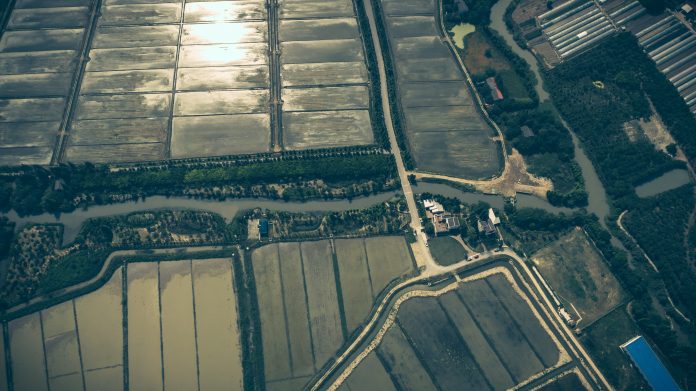The sound of a plane over a farm in the 1950s was a rare thing to see and it brought everyone to a standstill on the farm. This is when the magic happened and the photo was taken, capturing that moment in time. Aerial photography in the 1950s, with almost no flight restrictions, allowed these images to be taken at very low levels, revealing the details of day-to-day life on a prairie farm. This was done all throughout the prairie provinces, from Alberta to Manitoba. Being a one-man operation at the start of this industry, it involved flying the plane, as well as doing the photography, which in itself was daring and challenging. Now that you have survived taking over 10,000 images every summer, which in the end created a pictorial preservation of Western Canadian farms, what do you do with them? This undertaking involved having salespeople travel to each farm throughout the fall and winter presenting to the owner the photograph of their farm and hoping to sell a custom enlargement. They would sit down at the kitchen table with the owners and place numbers on the photo to correspond to all the buildings. This would indicate to staff back at the office how exactly to hand colorize these buildings and turn them from a black and white image to color. This was an early form of paint by number, where if not done correctly, it might cause you to end up with a red John Deere.
This practice has gone on for over 60 years on the prairies, and some companies have over a million images in stock, which allow the public to get reacquainted with the photos and own a small piece of family history. In the pictures, you will see children running to tell mom and dad, or grandparents in the middle of the yard blocking out the sun just to get a glimpse of the plane, cars of the day, and even family pets. For many of us, seeing the working horses pulling hay wagons, and grain stocks and thrashers in the fields at harvest time, brings back thoughts of our lives and younger years, growing up as our parents and grandparents worked hard to create the Western Canada we know today.
This was a simpler time and aerial photos have captured, and more importantly, preserved that. Many of those farms are now gone, and of those that remain, few, if any, retain the heritage buildings, barns, and look and feel of our historic farm communities. With the extra time that has been available to the public over the past year, it has given us all time to explore our past and the ancestry search has taken us in many directions. Archival aerial photos is an area that can give us a visual connection to how life was on a prairie farm, perhaps reconnect us to our families and roots, and certainly revive the memories and feelings of growing up on a Western Canadian farm.










